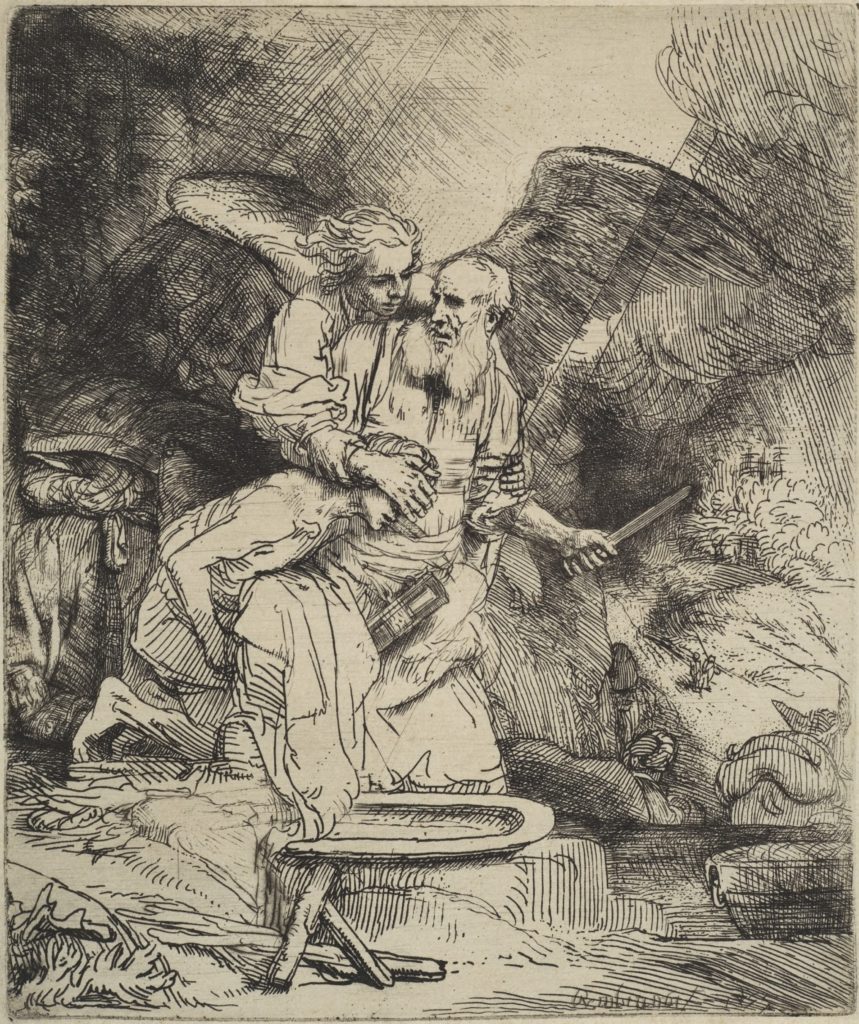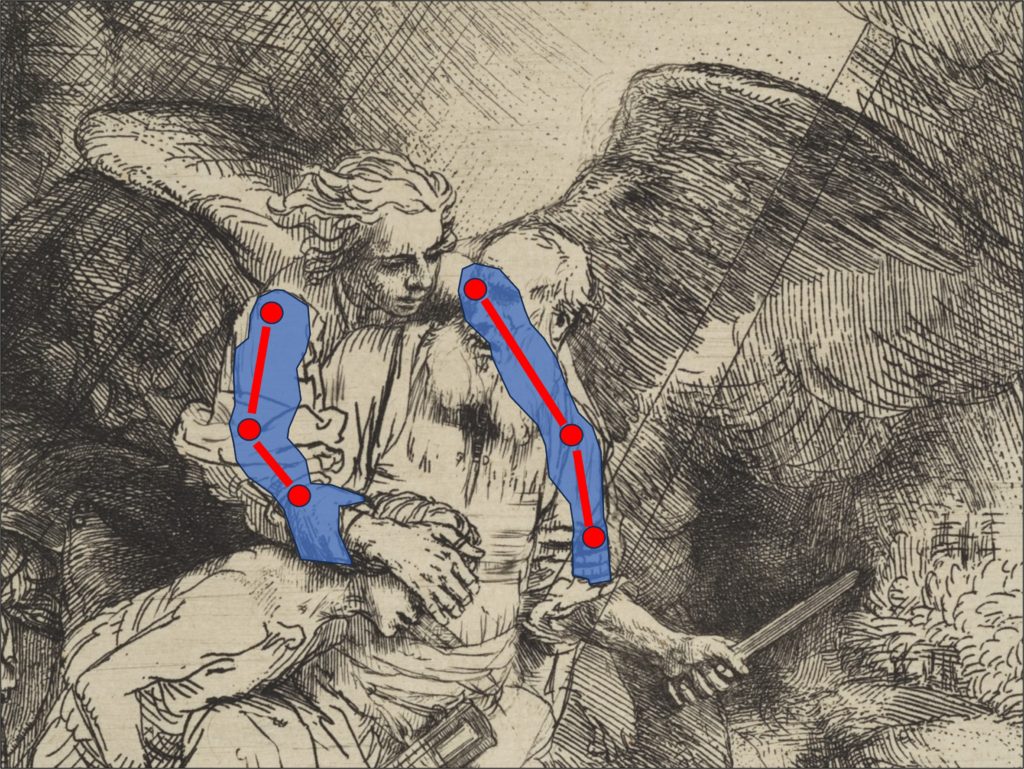A Thought on Art…
by Dieter Michael Feurich
Rembrandt: Abraham's Sacrifice (Etching in the Metropolitan Museum, New York City)
I came across the etching “Abraham’s Sacrifice” by Rembrandt van Rijn, 1655, The Metropolitan Museum, New York [Fig. 1]. Rembrandt painted the same subject 20 years earlier in oil, see the painting in The State Hermitage Museum, St. Petersburg, [Fig.3].
One interesting observation in the Met’s etching is the shortness of the angel’s right arm. It seems “too short” in relation to the rest of the angel’s body (even though that is mostly hidden by Abraham).

In the sketch below [Fig. 2], I indicated in blue the approximate shapes of the angel’s arms. The red dots indicate the approximate locations of the shoulder sockets, elbow hinges, and wrists. Based on this, the angel’s right arm would seem to be a good 6 to 8 in. shorter than the left arm.

In the Hermitage painting, in which the figures have a different spatial relationship to each other, the anatomic relations seem more “correct”. The angel grabs Abraham’s knife-holding arm and not the arm that holds Isaac’s head as in the Met’s etching.

However, I believe what the etching shows is that for Rembrandt the artistic expression of an idea was more important than the “accurate” drawing of a physical reality.
Rembrandt’s probable concept for the etching was the emotion involved in the situation: Abraham’s being torn between his obedience to the order he received from God (to sacrifice his son Isaac), his sadness, horror, desperation, and finally the relief he feels at the angel’s last-minute intervention. To capture all those simultaneous emotions of a single person in one image requires great clarity of intent and the ability to actually convey such feelings.
Rembrandt shows a highly intense moment; he makes the angel grab both of Abraham’s arms firmly from behind, as if determined to forcefully stop him, while also speaking fervently to him: Of all the pictures of this event that I have seen, this is the most resolute intervention by the angel.
The containment of the movement by the angel’s firm grip, the compactness of the composition (the heads of the three figures being close together), and the slanting lines formed by arms and light rays – all combine to convey the emotional concept effectively – even at the cost of drawing an arm shorter than it should be anatomically speaking.

